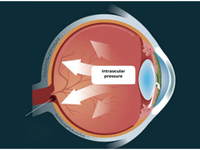Sodium Hyaluronate for Dry Eyes and How It May Increase Intraocular Pressure
Sodium Hyaluronate is an eye lubricant for treating dry eyes. It is also called artificial tears. When applied to the eyes, sodium hyaluronate soothes the eyes and reduces dryness. It lubricates the surface of the eyes and relieves them from itching pain.
What Are Dry Eyes?
A dry eye is a condition where the eyes cannot produce enough tears that provide the necessary lubrication for the eyes. Sodium Hyaluronate drops are very effective for preventing and treating eye dryness.
What Is Intraocular Pressure?
Intraocular pressure refers to the fluid pressure in the eye. During your regular eye examination, the doctor checks for your intraocular pressure. This tells the doctor the state of your eye health. From this, the doctor can see the signs of any optic nerve damage, which, if not corrected, can affect eyesight. A tonometry test measures the level of intraocular pressure. The normal range for intraocular pressure is about 10 – 20 mmHg.
Does Use of Sodium Hyaluronate Eye Drop Cause An Increase in Intraocular Pressure?
Sodium Hyaluronate is now recently adopted during surgeries on cataracts. It has excellent use as it forms a protective layer on the endothelium, preventing direct contact with the intraocular lens implant.
In a study by Muhammed Wassem et al., retrieved from the National Library of Medicine, the study concluded that Sodium Hyaluronate causes a significant increase in intraocular pressure in the early postoperative period just after cataract surgery.
Another study by Michael Passo et al. published in the British Journal of Ophthalmology showed that Sodium Hyaluronate increases intraocular pressure. The research centered on studying 24 patients who had cataract surgery where three different agents were used to reform the anterior chamber. The three agents used were air, sodium hyaluronate, and a combination of Hyaluronate and acetazolamide. The test subjects all had tonometry 16 hours before their surgery, and the same was done every eight hours after the surgery within 72 hours. The researchers found that the intraocular pressure doubled in the group treated with Hyaluronate on the first day following the surgery.
Why Intraocular Pressure Matters
The intraocular pressure helps keep the eye in shape, which ensures that all two million parts that make up the eyes are intact, allowing the eye to function properly. The eye may experience high pressure or low pressure. High pressure occurs when the fluid in the front of the eyes doesn’t drain out well, or the eyes produce more fluid than usual. The pressure can get so high, which is referred to as ocular hypertension, and may lead to glaucoma.
Low intraocular pressure, on the other hand, occurs when the fluid in the eyes is not enough. However, it is of no major concern like the high intraocular pressure. Low eye pressure may happen due to the leakage of fluids from the eyes after surgery. Low intraocular pressure may lead to blurry vision for some persons.
Before Using Sodium Hyaluronate
It is vital that before using any eye drop containing sodium hyaluronate, you should see if it is suitable for you by consulting a physician and an eye doctor. Ensure that your doctor knows if you:
1. Have ever reacted to eye drops containing preservatives?
2. Wear soft contact lenses.
How to Use Sodium Hyaluronate Eye Drops?
1. Ensure to thoroughly wash your hands before handling the bottle of the eye drop.
2. Remove the caps from the bottle carefully to prevent the content from spilling.
3. Tilt your head to the back slightly, and then pull the lower eyelid to create a pocket for the fluid.
4. Turn the bottle upside down near your eye and avoid touching the eyes.
5. Press the bottle until you release a drop into the eyes. If the first drop missed entering the eye, you could press the second time.
6. After the drop lands in the eyes, you can close the eyes for a minute or two to allow the liquid to touch all the parts of the eyes.
7. Ensure the dropper doesn’t touch your eye, your fingers, or any other surface. This could contaminate the drops left in the bottle.
8. Repeat the above steps for the second eye only if your eye doctor told you to use them on both eyes.
9. Close the bottle tightly after use again.
Can Sodium Hyaluronate Cause Problems?
Different reports and cases now show that Sodium Hyaluronate can occasionally cause mild irritation in the eye. However, not everyone experiences any of these allergies, and they quickly subside after a short time.
How to Store Sodium Hyaluronate Eye Drops?
1. Ensure to keep it in a cool and dry place. Away from heat and direct light.
2. Keep it away from the reach of children.
3. Ensure that you check the expiry date on the label and how long you can use it.
At Stanford Chemicals, we provide medical-grade Sodium Hyaluronate that is used in eye drops and contact lens solutions. You can contact us now at (949) 812 6690 or (949) 468 0555 to place your order.

